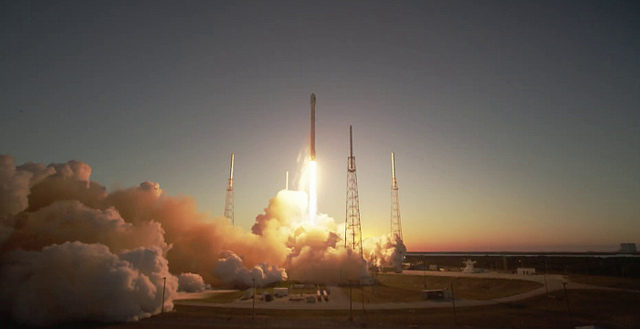
Most rocket launches do not come with live webcasts, and even when they do, the broadcast data is scarce. However, it is possible to reasonably approximate launch trajectories, if one knows where to look.
Rocket Data
The first step is to look for the rocket user manual, which is usually available on the internet as pdf, for customers who need to know more about the vehicle, when they are in the process of selecting one for their payload.
You can usually find the number of stages and their dry mass + fuel mass, the engine thrust at sea level and at vacuum level.
Forces Computations
Once you have some data about the rocket, you need to make sure you have what is necessary to compute forces acting on the spacecraft.
For thrust computation, in theory, you could compute a thrust profile over time, if you have access to rocket engines mass flow rates, nozzle cross-section, and ISP profile over time. Most of the time, this data is not available, so in order not to make to many assumptions, we usually decide to suppose a given thrust profile.
Over the burn time (approximate values can be inferred from webcasts or found in user manuals), we suppose thrust starts at sea level value, and ends at vacuum level value, with a linear evolution between the 2. This is of course a very rough approximation.
For atmospheric drag computations, reference area and drag coefficient can be approximated with known ranges. Pick a drag coefficient around 0.25 for a rocket, and the rocket nose base surface for reference area and you won’t be very far from the truth. For pressure, you can use an Earth atmosphere model such as US76 for example.
For gravity drag computations, we usually assume a constant mass flow rate over burn time, to compute at which speed rocket mass is decreasing. This is also a coarse approximation, even more for rockets with throttling capabilities such as the Falcon 9 Full Thrust version.
Launch Sequence and Target Orbit
User manuals and webcasts are again a valuable source of information, and you can usually find the duration of stage burns, the stage separation and fairing separation, maximum dynamic pressure events etc.
Target orbit is usually known for commercial missions, and in the worst cases you can check NORAD TLEs to find a posteriori the payload orbital elements.
Numerical Integrator
Once you have the vehicle facts sheet and a model for the 3 main forces acting on the rocket (thrust, atmospheric drag, gravity drag), you need a numerical integrator to actually compute the trajectory. This is perfectly doable with Matlab (ex: ODE45), but you can also use NASA GMAT Runge-Kutta integrators, or any other software package, commercial or open source.
However, there is one missing piece of information: the control law, eg the thrust direction. This is obviously a fundamental input for trajectory computations.
Control Law Optimization
The most common way of reverse engineering a rocket trajectory is to consider the control law as an optimization variable. For each control law candidate, you compute the resulting trajectory with your numerical integrator and vehicle model, and you evaluate how far the resulting orbit is from the target orbit.
This is where knowledge about launch sequence can come handy: knowing the speed at various time points, the max dynamic pressure event etc can help you constraint the exploration space, and speed up optimization (kill early non-viable trajectories).
For example, SpaceX Falcon 9 Full Thrust trajectories have to take into account the return of the first stage. SpaceX mission planners are thus likely to use an initial trajectory slightly more vertical than usual, to ensure the first stage has less distance to travel to return to the launch site. This has an impact too on the initial fuel mass onboard the stage.
Improvement Opportunities
The techniques we described earlier are very rough. In order to improve accuracy, you can make a better assumption than linear evolution for thrust profile. Also, engines mass flow rate is probably not constant.
For atmospheric drag, the drag coefficient should be a function of Mach number. Last but not least, you would need to take into account environmental conditions such as wind speed during ascent.
We think those improvements are achievable with public data, we will come back to it in a later post.
Conclusion
Reverse engineering rocket trajectories is fun, but you will always hit a wall at some point, where in order to achieve higher accuracy you will need non-public rocket data. However, for visualization and back of the enveloppes estimations, there is plenty of public data available to achieve decent accuracy.